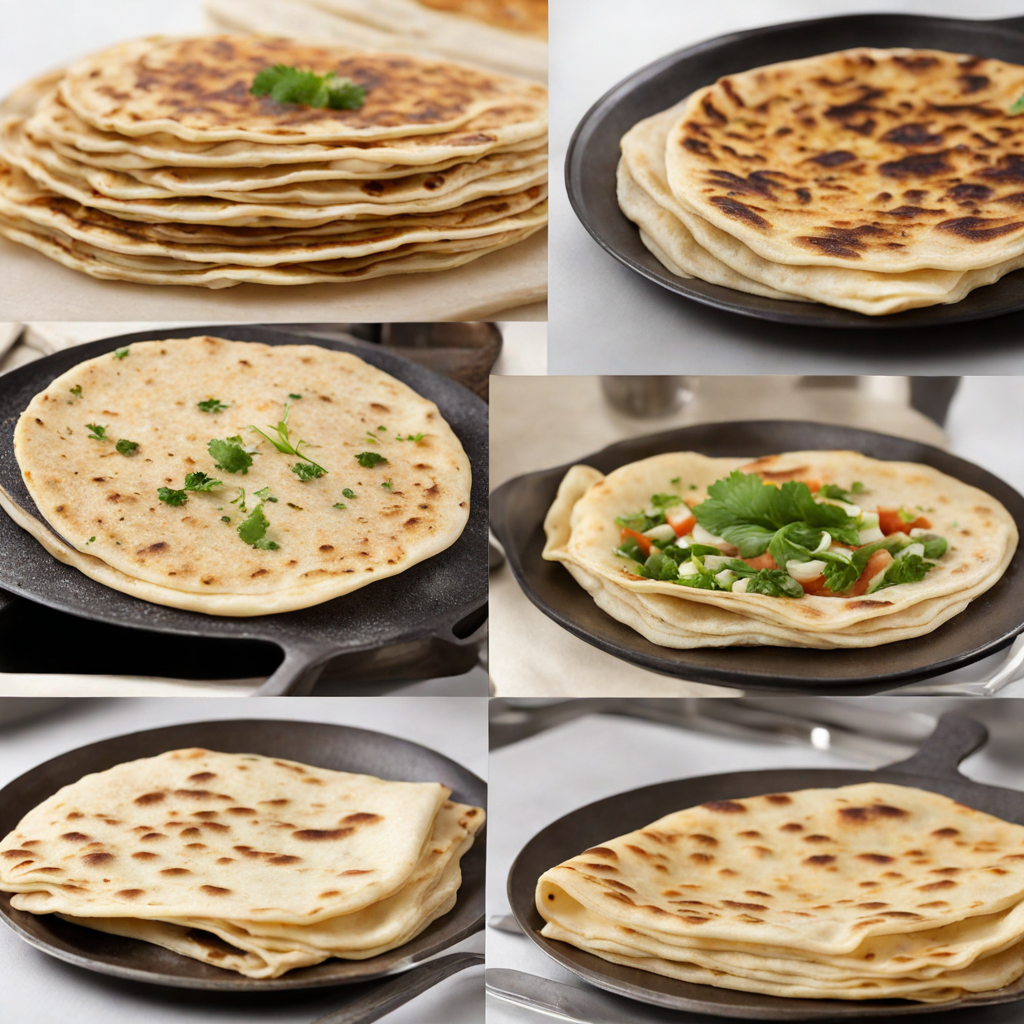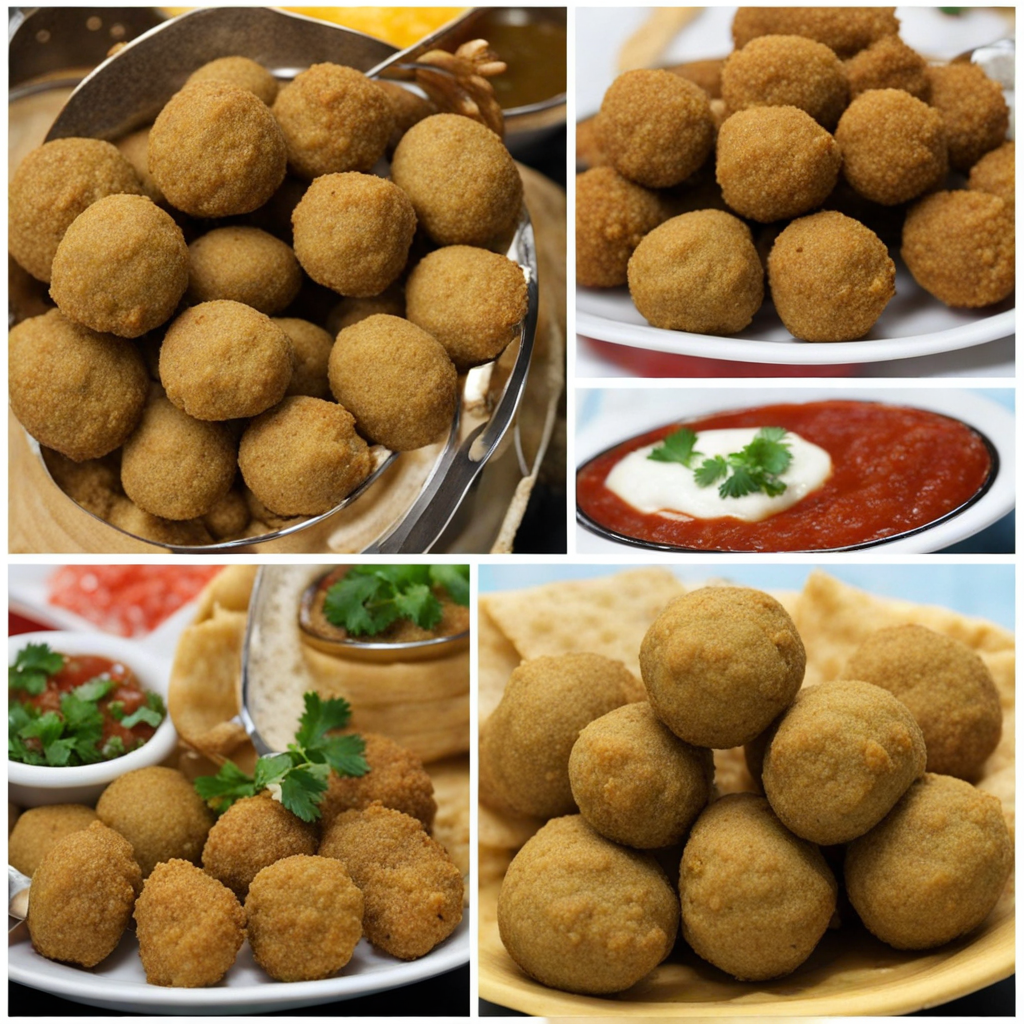Markook
Markook is a traditional flatbread that hails from the Arabian Peninsula, particularly beloved in Saudi Arabia. This unleavened bread is made from simple ingredients, primarily flour, water, and a pinch of salt, which come together to create a light and pliable dough. What sets Markook apart is its unique cooking method; it is traditionally cooked on a large, hot griddle called a “taboon,” which gives it a slightly charred exterior while maintaining a soft and chewy interior. The result is a versatile bread that can be enjoyed on its own or used as a vehicle for various delicious fillings and dips. One of the remarkable aspects of Markook is its adaptability. It can be served with an array of dishes, from grilled meats and stews to fresh salads and dips like hummus and baba ghanoush. The bread’s thin, delicate nature allows it to easily wrap around fillings, making it a popular choice for sandwiches or as a side for hearty meals. The subtle flavor of Markook complements many dishes without overpowering them, making it a staple in Saudi Arabian cuisine. Markook is not just a food item; it is a part of the cultural fabric of Saudi Arabia, often enjoyed during gatherings and celebrations. Its preparation can be a communal activity, with family members coming together to roll out the dough and cook it over an open flame. This shared experience enhances the enjoyment of the bread, as it is often paired with generous helpings of flavorful dishes, fostering a sense of community and tradition. For anyone looking to explore new culinary horizons, Markook offers a delicious entry point into the rich and diverse world of Middle Eastern flavors.
How It Became This Dish
The Rich History of مرقوق (Marqooq) in Saudi Arabia Introduction: A Culinary Journey Marqooq, a traditional dish from Saudi Arabia, is more than just a meal; it is a culinary tapestry woven with the threads of history, culture, and communal identity. This dish, a hearty stew combined with thinly rolled dough, carries the essence of Saudi hospitality and the region's agricultural bounty. To understand Marqooq, one must delve into its origins, cultural significance, and how it has evolved through the centuries. Origins: Rooted in Tradition The roots of Marqooq can be traced back centuries to the Arabian Peninsula, where the Bedouin lifestyle heavily influenced the local cuisine. The arid climate and nomadic lifestyle necessitated a diet that was nourishing, portable, and easy to prepare. As a result, dishes like Marqooq were developed using basic ingredients that were readily available, such as wheat flour, meat, and vegetables. The word "Marqooq" itself comes from the Arabic verb "رَقّ" (raq), meaning to roll or flatten. This reflects the preparation method where unleavened dough is rolled into thin sheets and cooked within the stew. The dish showcases the ingenuity of early Arab cooks who made use of local resources while creating meals that could sustain the community. Cultural Significance: A Symbol of Hospitality and Community In Saudi Arabia, food is a vital part of social and cultural life. Marqooq is particularly cherished during gatherings and celebrations, symbolizing hospitality and generosity. Traditionally, it is often prepared in large quantities to serve extended family and guests, reinforcing the values of community and togetherness that are central to Saudi culture. The preparation of Marqooq is often a communal activity, with family members coming together to create the dish. This act of cooking becomes a social event, fostering bonds among family and friends. The shared experience of enjoying Marqooq around a communal platter further emphasizes the importance of unity and hospitality in Saudi traditions. Moreover, Marqooq is often associated with special occasions, particularly during the holy month of Ramadan. After a day of fasting, families break their fast with hearty meals, and Marqooq serves as a fulfilling option that brings everyone together at the table. The dish’s warmth and richness reflect the spirit of generosity and sharing that permeates the month. Ingredients and Preparation: A Culinary Art The ingredients of Marqooq are simple yet versatile, embodying the flavors of the Arabian landscape. The base typically consists of lamb or chicken, which is stewed until tender. Vegetables such as potatoes, carrots, and often local greens are added, enriching the stew with flavor and nutrition. The heart of Marqooq lies in its dough, made from wheat flour and water, rolled out into thin sheets and cooked directly in the broth. The preparation of Marqooq can be seen as an art form. The dough must be rolled to a precise thinness, ensuring it cooks evenly and absorbs the flavors of the stew. Traditionally, the dish is cooked in a large pot called a "maraq," allowing the ingredients to meld together over low heat, creating a symphony of flavors that is both comforting and satisfying. In modern times, while the basic elements of Marqooq remain unchanged, some variations have emerged. In urban settings, the dish may incorporate a broader array of spices, reflecting global culinary influences. Ingredients such as saffron, coriander, and cumin may be used to enhance the flavor profile, showcasing the adaptability of this beloved dish. Evolution Over Time: From Tradition to Modernity As Saudi Arabia has undergone significant socio-economic changes, the preparation and consumption of Marqooq have also evolved. The discovery of oil in the mid-20th century transformed the nation’s economy and lifestyle, leading to urbanization and modernization. With these changes, traditional dishes like Marqooq faced the challenge of maintaining their relevance in a rapidly changing world. In urban areas, Marqooq is now often prepared in modern kitchens, where convenience and time efficiency are priorities. Pre-packaged ingredients and ready-made dough are increasingly available, allowing busy families to enjoy this traditional dish without the lengthy preparation time. Despite these changes, many families still hold on to traditional cooking methods, viewing them as a way to preserve cultural heritage. Furthermore, the globalization of cuisine has introduced new flavors and techniques to Saudi cooking. Chefs and home cooks alike experiment with Marqooq, creating fusion versions that incorporate international ingredients. This evolution is not seen as a dilution of tradition but rather a celebration of culinary creativity, allowing Marqooq to remain relevant in contemporary dining. Marqooq in Contemporary Saudi Society Today, Marqooq is celebrated not only as a staple dish in Saudi households but also as a culinary emblem of the nation. Food festivals and culinary competitions often feature Marqooq, showcasing the diverse interpretations of this traditional dish. Chefs and home cooks take pride in their unique recipes, emphasizing the regional variations that exist within Saudi Arabia. Social media has played a significant role in the revival and appreciation of traditional dishes like Marqooq. Platforms like Instagram and TikTok have become venues for sharing recipes and cooking techniques, fostering a new generation's interest in culinary heritage. Food bloggers and influencers often highlight Marqooq in their content, introducing it to audiences beyond Saudi Arabia and sparking interest in Middle Eastern cuisine. Moreover, the Saudi government has recognized the importance of preserving culinary traditions as part of the nation’s cultural heritage. Initiatives aimed at promoting traditional foods, including Marqooq, are part of broader efforts to celebrate the Kingdom's rich history and diversity. Conclusion: A Dish Beyond Time Marqooq is not merely a dish; it is a living testament to the rich history and cultural tapestry of Saudi Arabia. From its humble origins among the Bedouins to its place at modern dining tables, Marqooq embodies the resilience of tradition in the face of change. It is a dish that brings people together, reflecting the values of hospitality, community, and togetherness that define Saudi culture. As Saudi Arabia continues to evolve, so too will Marqooq, adapting to new influences while remaining a cherished part of its culinary heritage. Thus, every bite of this hearty stew is a journey through time, connecting the past with the present, and serving as a reminder of the enduring power of food to bridge generations and cultures.
You may like
Discover local flavors from Saudi Arabia







